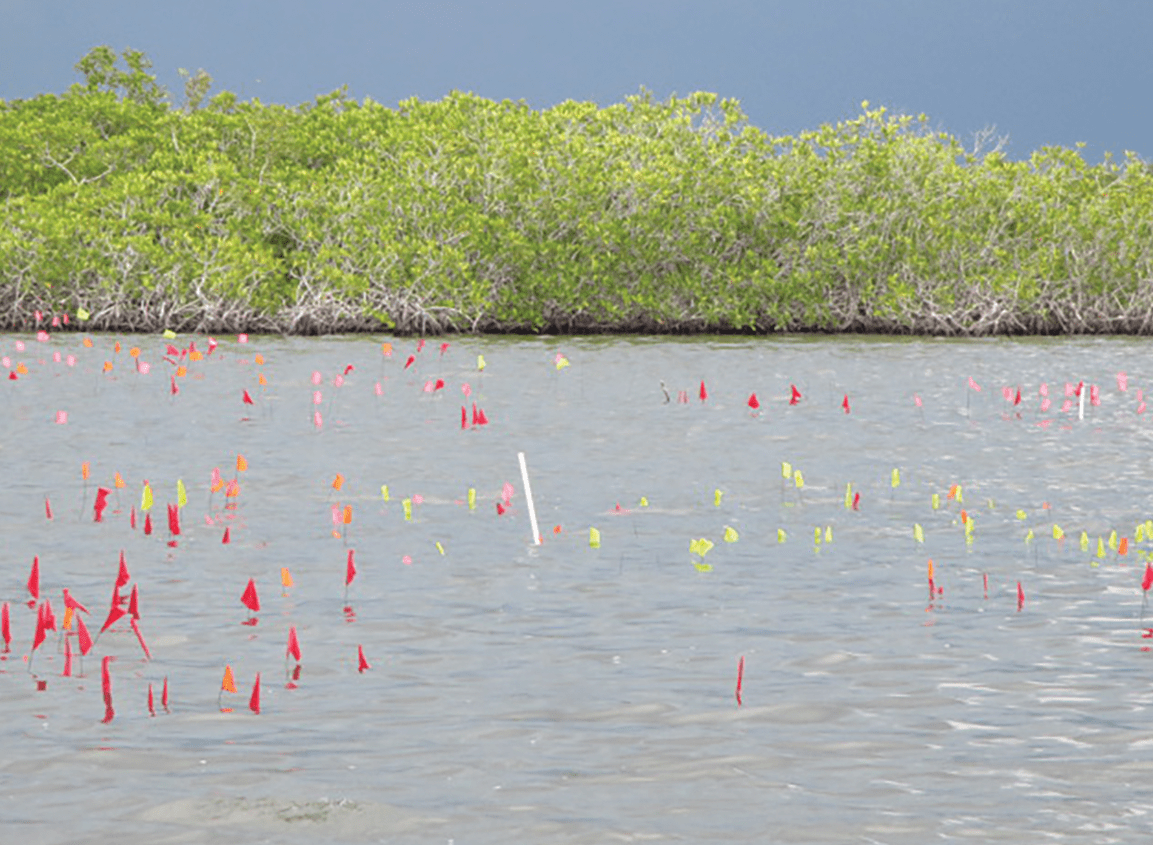Underwater excavations just off the coast of Belize have revealed how the Maya civilization manufactured salt, the much-needed commodity that kept the empire rolling. Like any underwater archaeology, the new research is a reminder of how the Earth’s lakes, rivers, and oceans may still hide many vital insights into how humans once lived.
The discovery comes from an archaeological site known as Ta’ab Nuk Na, which was inhabited from around 600 to 800 CE. This area of Paynes Creek in Belize is home to around 110 submerged Maya sites, but Ta’ab Nuk Na is the largest – and perhaps one of the most insightful.
Two researchers from Louisiana State University and the University of Texas at Tyler have recently carried out a seafloor survey of the site.
Although water can erode away wooden structures from centuries ago, this site is embedded in anaerobic mangrove peat, which contains very low oxygen and staves off microorganisms that would typically break down the structures.
Their survey revealed the presence of “kitchens” for brine boiling. In sum, salty sea water would be placed in ceramic vessels and heated on a fire. The water would evaporate off, leaving behind just the salt.

Flags show the location of structures in the southern part of Ta’ab Nuk Na. Image credit: H. McKillop
Crucially, this new study found that Ta’ab Nuk Na was also home to residential structures where people lived. Just like many office workers in the 21st century, it looks like these Maya salt makers worked from home. Other parts of the site also appear to have housed buildings used for salting fish for preservation or drying the salted fish.
All of this helps to answer the big question of how the Maya civilization fulfilled its huge appetite for salt. Along with being an invaluable tool for preserving food, salt was also used as currency in the Classic Maya economy.
There was high demand for this commodity, especially during the Classic period when Ta’ab Nuk Na was in use, but much of the civilization lived inland where it was harder to foster. You might expect this high demand to require a huge organized industry, but it appears the civilization’s huge salt output was mainly built upon this kind of cottage industry.
“Salt production by a household at Ta’ab Nuk Na fits well with a Classic Maya economy, where households produced surplus resources or commodities for local exchange, as well as for trade at regional marketplaces,” the study authors write.
“Estimates of salt yields based on ethnographic analogy with historic salt production at Sacapulas underscore the large quantities of salt produced by such households. Extrapolating beyond Ta’ab Nuk Na to the greater Paynes Creek Salt Works, more than enough salt was produced across 10 salt kitchens to meet the dietary needs of nearby, inland communities in the Classic period,” they conclude.
The new study was published in the journal Antiquity.
Source Link: Long-Lost Sunken Town Shows How The Maya Civilization Ran On Salt